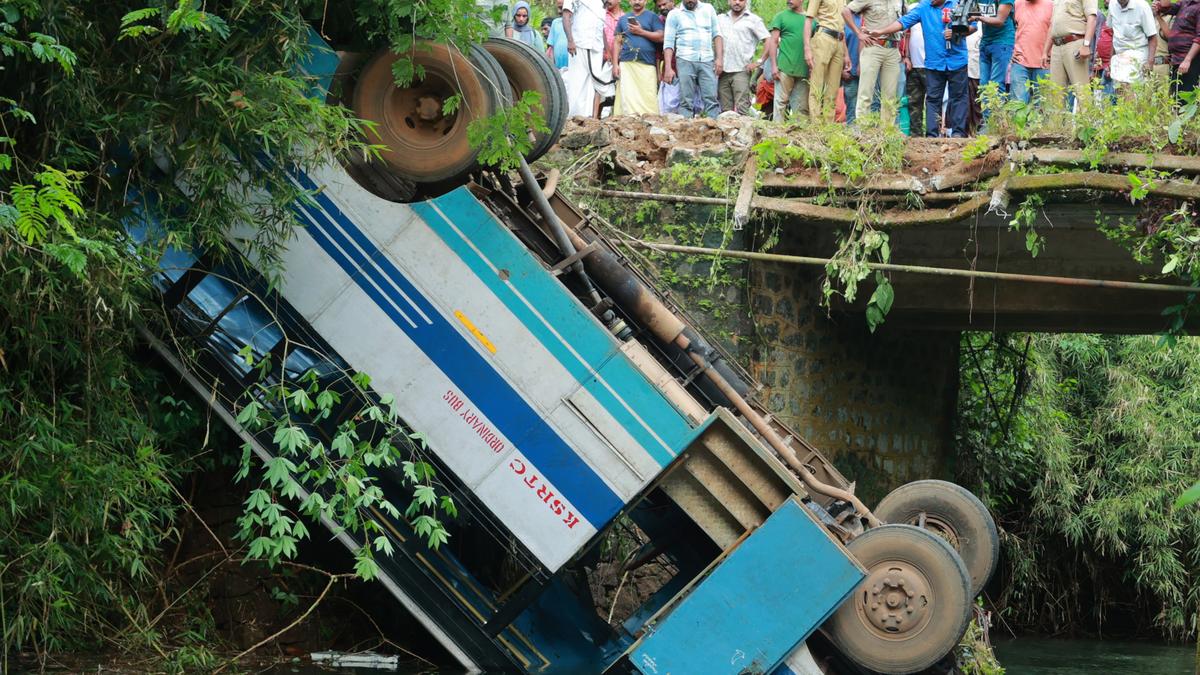Are Old KSRTC Buses a Danger on Kerala Roads? Shocking Statistics Reveal a Grim Truth!
The recent surge in accidents and fires involving Kerala State Road Transport Corporation (KSRTC) buses has sparked outrage and raised serious concerns about the safety of passengers and the public. A recent RTI query has revealed a shocking reality: a significant portion of the KSRTC's fleet is dangerously outdated, lacking proper insurance, and in dire need of immediate modernization. This alarming situation demands immediate attention and significant changes within the corporation. Prepare to be shocked by the details uncovered.
The Ageing KSRTC Fleet: A Ticking Time Bomb?
The RTI query revealed that out of the KSRTC's total fleet of 5,523 buses, a staggering 1,194 are over 15 years old—well past their operational lifespan. Even more alarming, 1,080 of these aging buses remain in active service. This translates to almost a quarter of their fleet posing significant safety risks. This shocking statistic underscores the urgent need for the KSRTC to phase out its oldest buses immediately. It's not just about the numbers; it's about the safety of the thousands of commuters who rely on these buses every day. This oversight represents a significant lapse in safety standards and demands an immediate overhaul.
The insurance gap and safety risks
The lack of comprehensive insurance coverage further compounds the safety risk. The query also showed that only 2,300 buses have insurance, but most of these only have third-party insurance. This means that passengers injured in accidents may not receive the necessary compensation. What does that mean for accident victims? Without adequate insurance, the KSRTC itself has to bear the brunt of compensation costs.
The hidden costs of neglect
The financial implications of this situation are staggering. KSRTC has to meet accident compensation from revenue generated by ticket sales—money intended for maintenance and worker salaries. The consequence is that salaries are often paid late, causing hardships for KSRTC employees. This financial drain underscores the immediate need for efficient fleet management, adequate funding, and a robust insurance system. It's time for a financial restructuring plan to effectively allocate funds for safety upgrades and timely salaries for hard-working employees.
Accidents and Safety Concerns: A Growing Trend
KSRTC buses have become increasingly notorious for incidents like fires and accidents caused by poor maintenance, and not just age. There are on average, at least ten accidents daily. Experts believe that this dangerous trend demands an in-depth investigation by an independent agency and not simply KSRTC and MVD internal inquiries. This investigation would clarify what is happening, give better insights, and provide needed action items. In other words, this issue needs an immediate and decisive action.
Questionable practices
Amongst the serious concerns is the decision of KSRTC to extend the lifespan of their SuperFast buses from five to twelve years, owing to a shortage of funds. This decision alone might be the biggest concern. How many accidents or injuries could be avoided if this policy were overturned? This cost-cutting measure may seem financially reasonable in the short term but has created significant and perhaps irreversible safety implications in the long term. Mr. Antony believes that there should be a rigorous investigation into KSRTC’s SuperFast buses, because several accidents recently have been caused by the wheels coming off the moving buses!
The Need for Urgent Modernization
The issue goes beyond just replacing old buses. A comprehensive modernization strategy includes measures such as improving maintenance practices, employing rigorous safety checks, ensuring adequate driver training, and investing in new technology and improved safety standards. The lack of insurance and the delays in salary payments highlight the urgent need for proper funding, transparent management and improved accounting methods. Only through a comprehensive and sustained effort can this crisis be effectively addressed and ultimately eradicated.
Transparency and accountability
Beyond technological upgrades, transparency and accountability are vital. Establishing a mechanism to track accident compensation payments from 2016 will provide crucial data to assess the true extent of KSRTC’s liability and inform its modernization efforts. This action could ensure the agency follows proper channels, meets its responsibilities and improves the conditions of passengers. The corporation should implement robust and transparent mechanisms, not just as a means to solve current problems, but as a proactive approach to future issues.
Conclusion: A Call for Action
The grim statistics unveiled regarding the state of KSRTC's fleet and accident record demand immediate action. It is an urgent call for a thorough overhaul—from replacing old and unreliable buses to overhauling its maintenance and safety standards, implementing an effective insurance scheme, and addressing the chronic problem of delayed salaries. The solution needs to be a long-term investment, not a short-term quick fix.
Take Away Points:
- Nearly a quarter of the KSRTC's fleet is over 15 years old.
- A significant number of buses lack adequate insurance coverage.
- The corporation's failure to modernize its fleet endangers both commuters and the public.
- Improved financial management and safety standards are crucial.
- An independent investigation into accident causes and systemic problems within KSRTC is vital.
- Only a multipronged solution will make lasting improvements to safety and reliability of KSRTC bus service.




